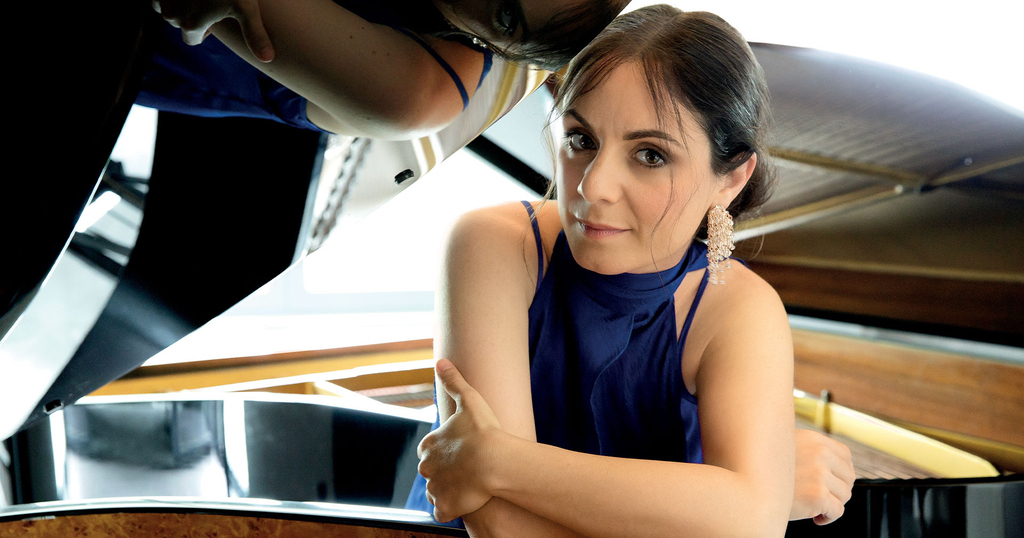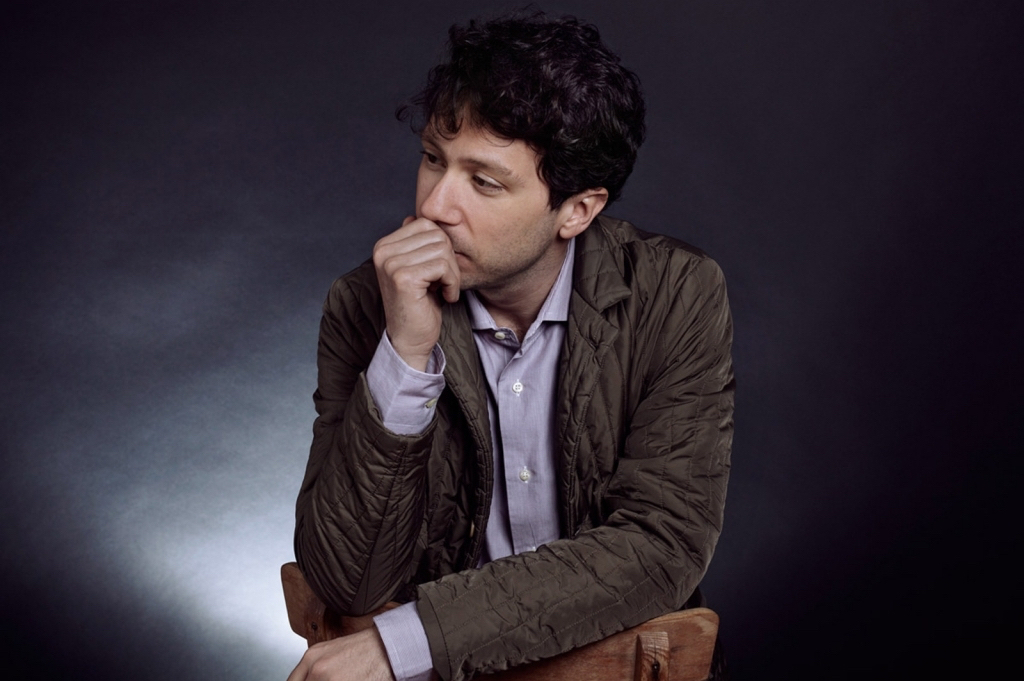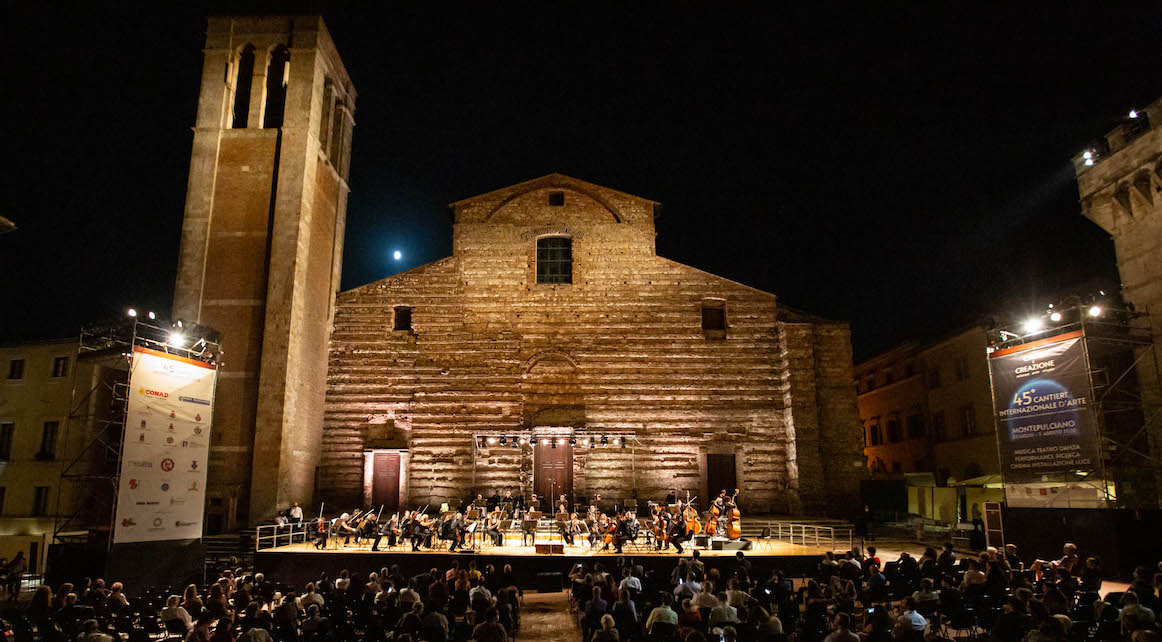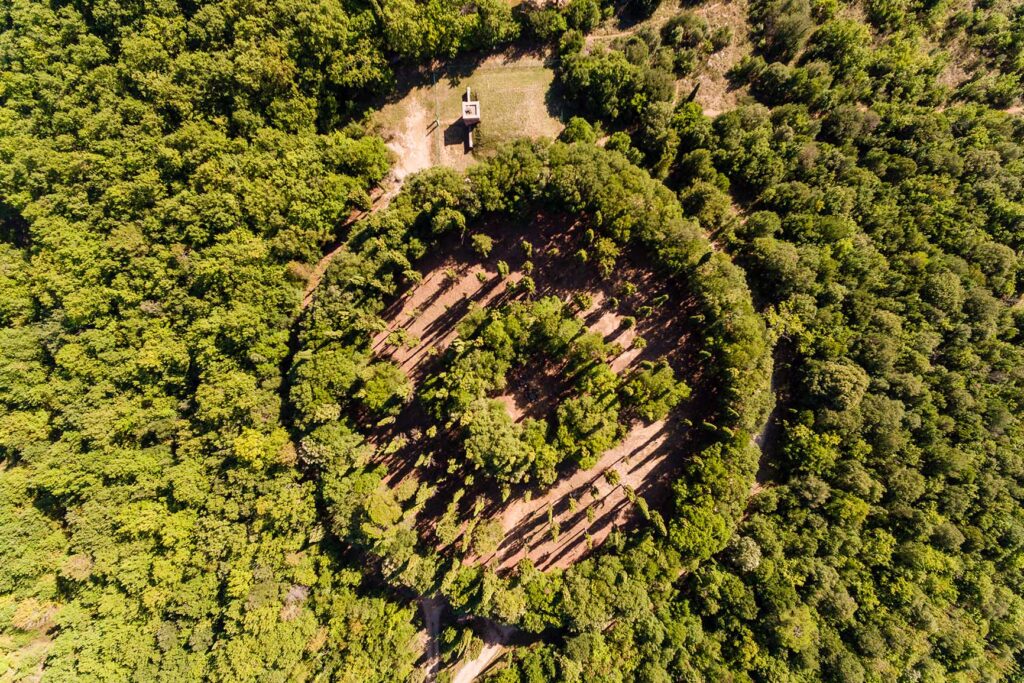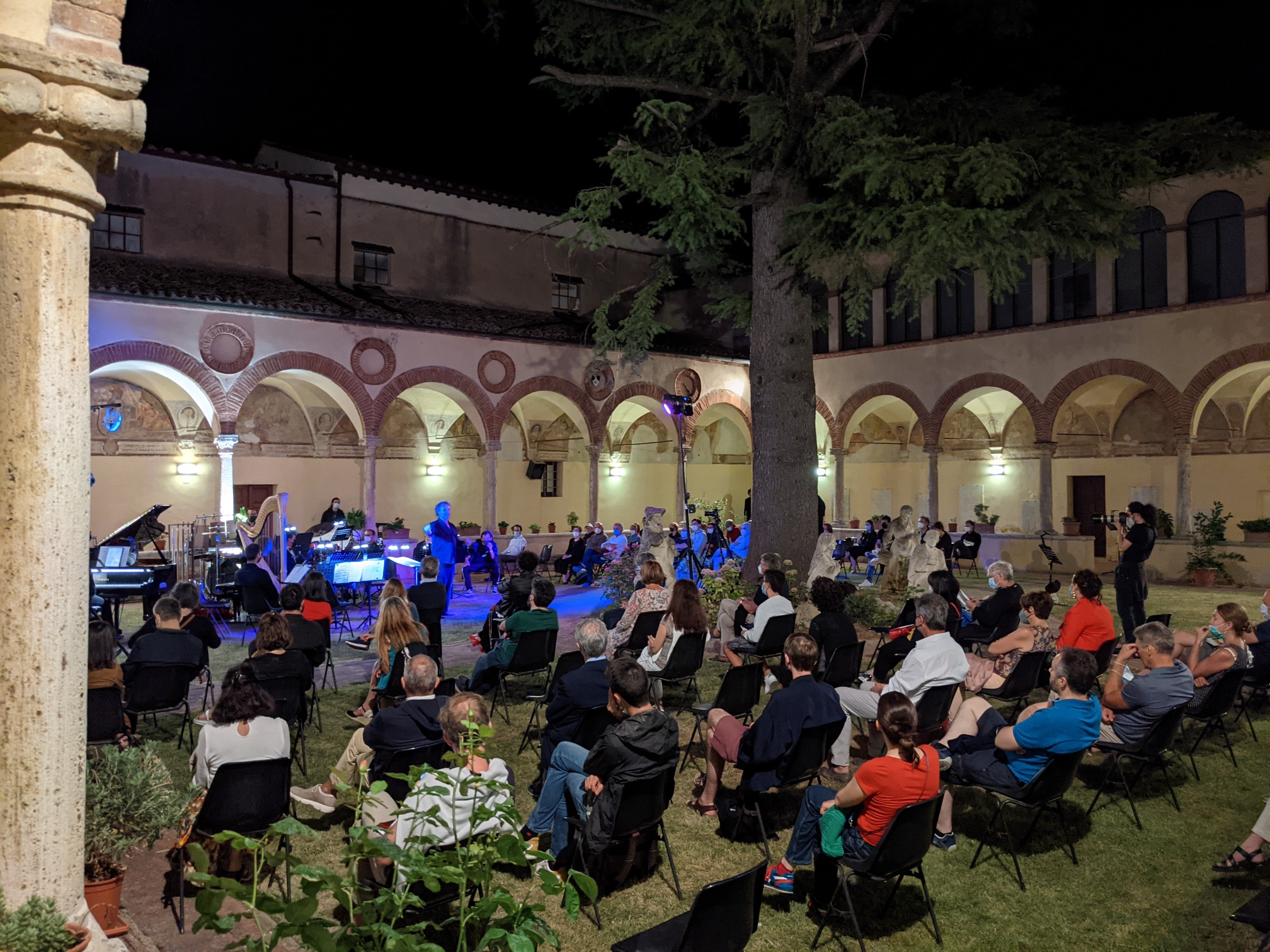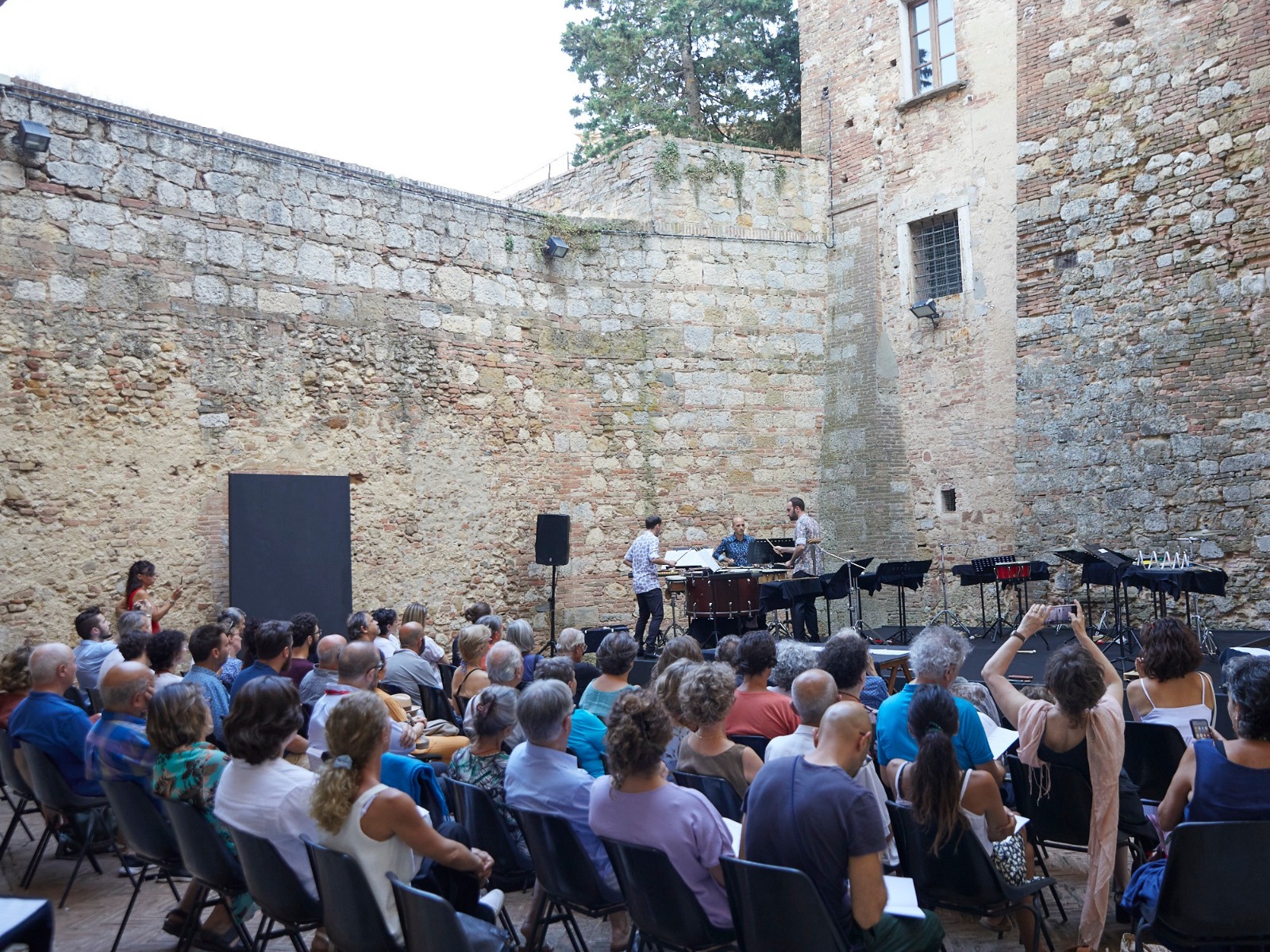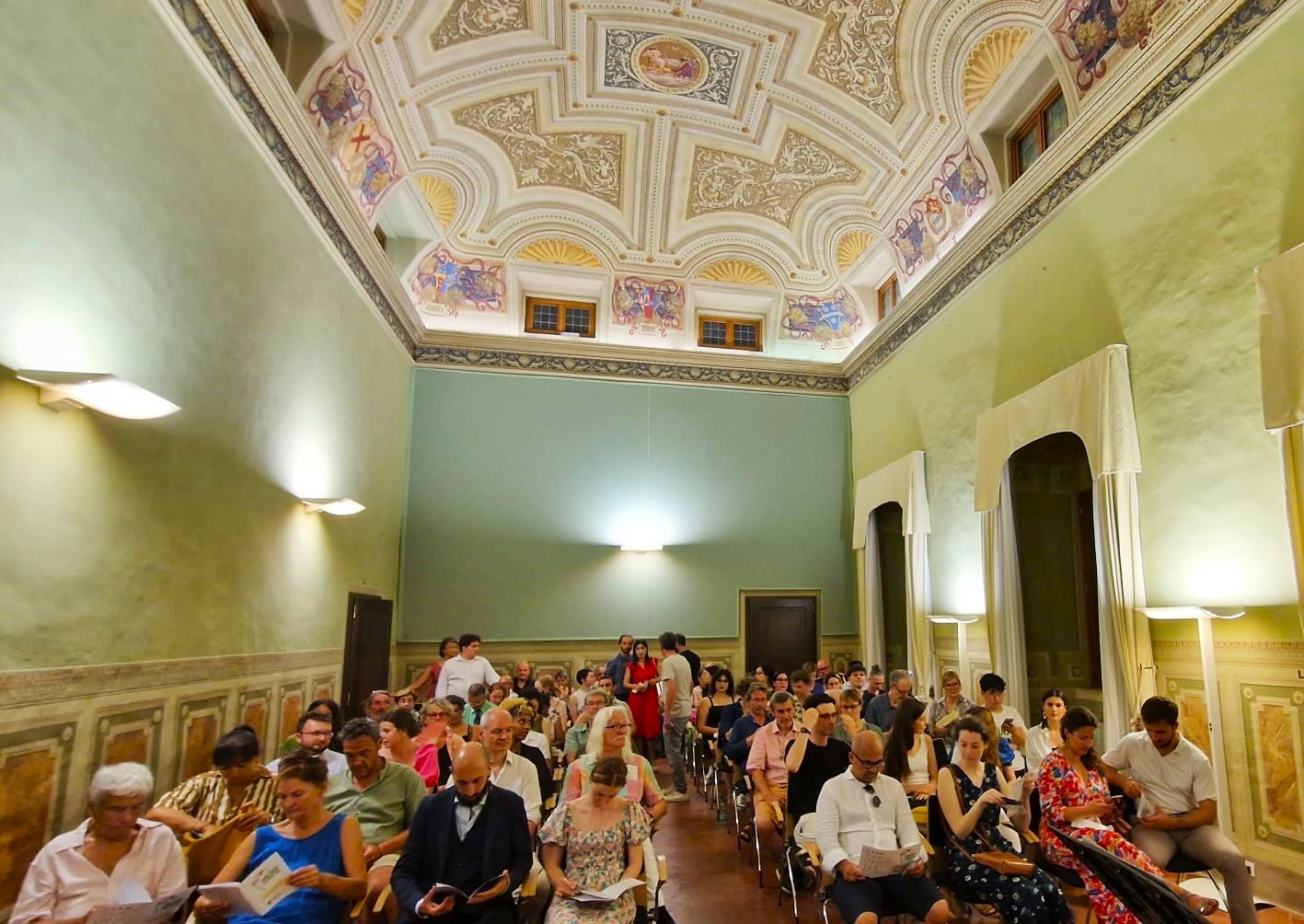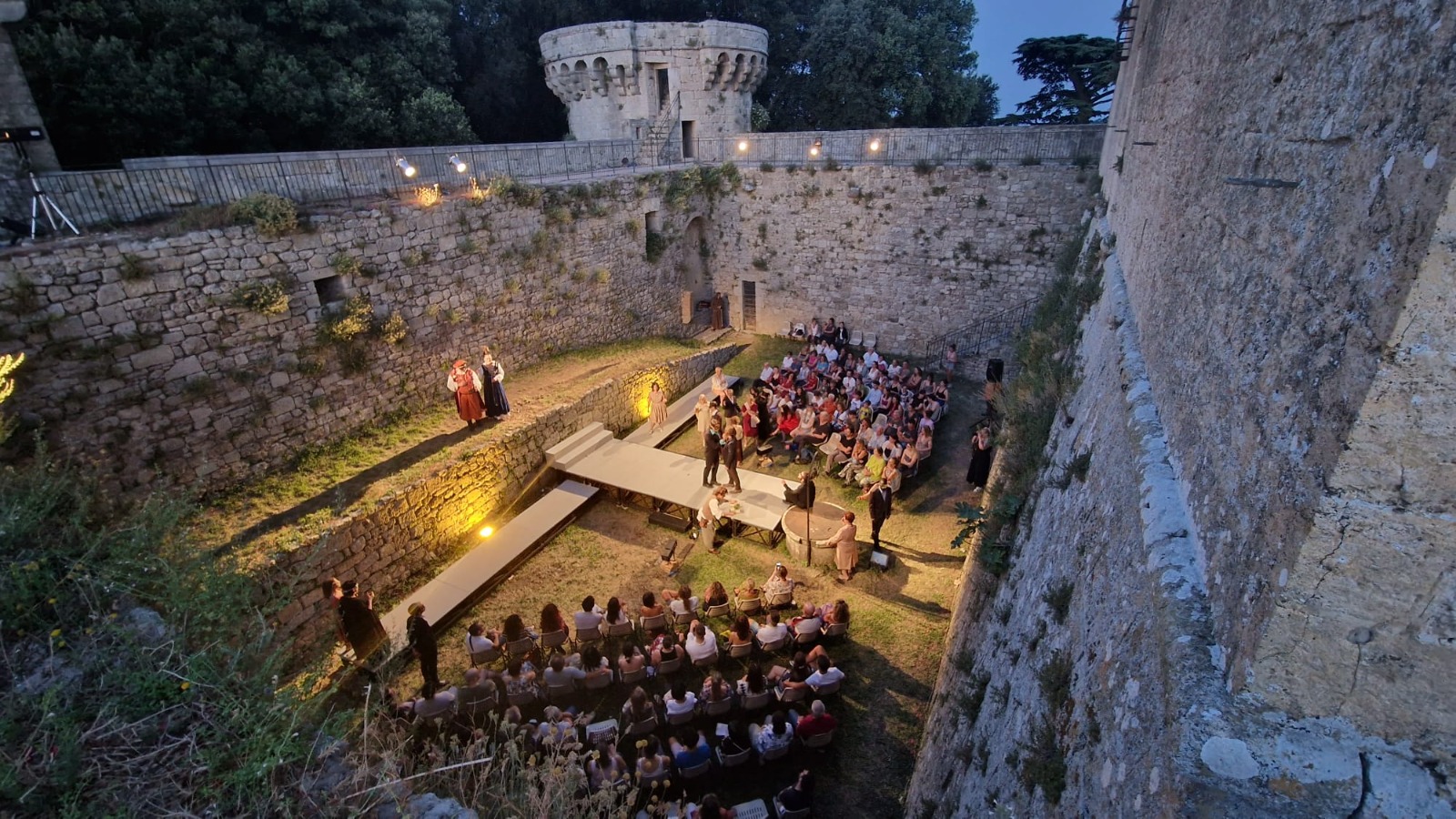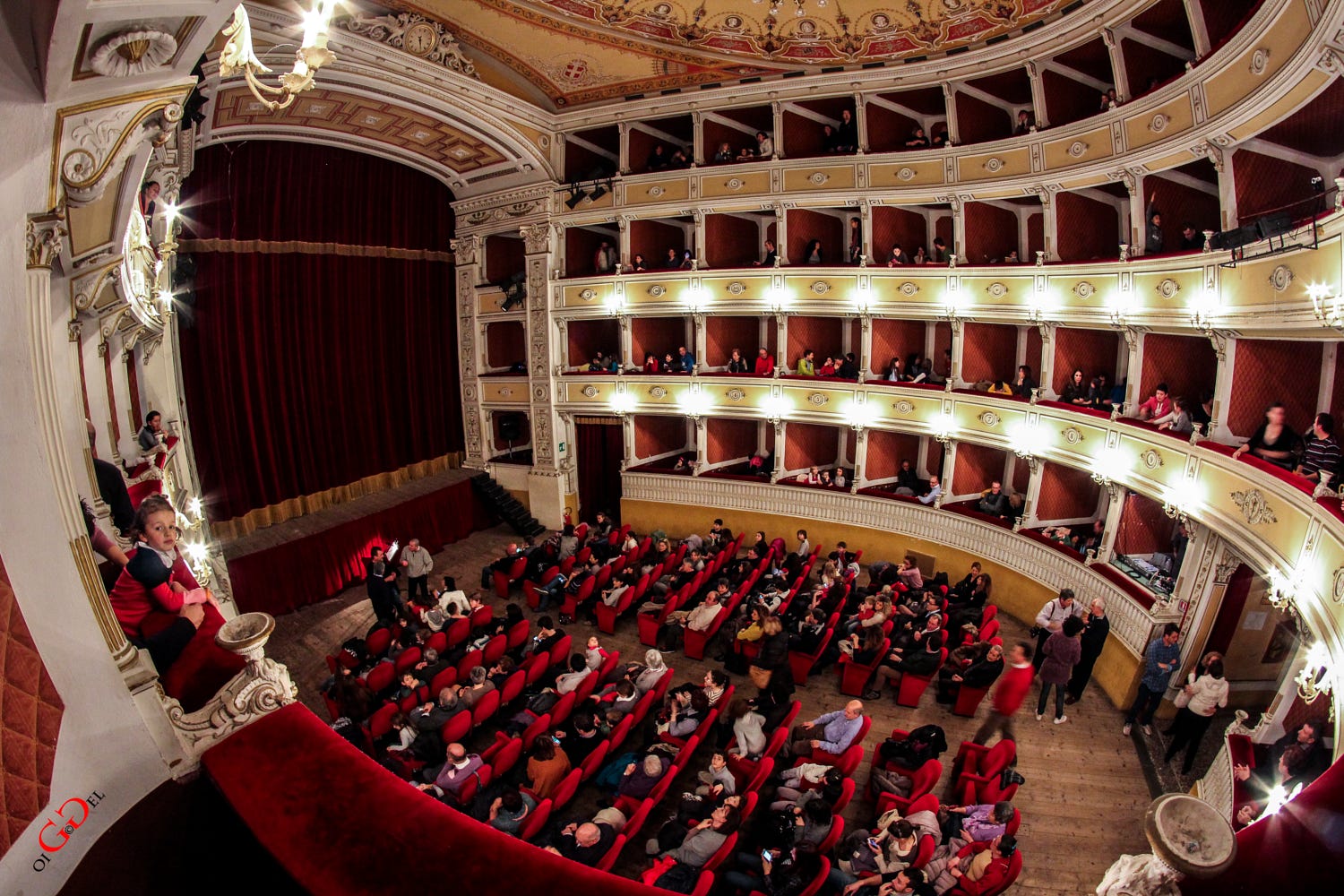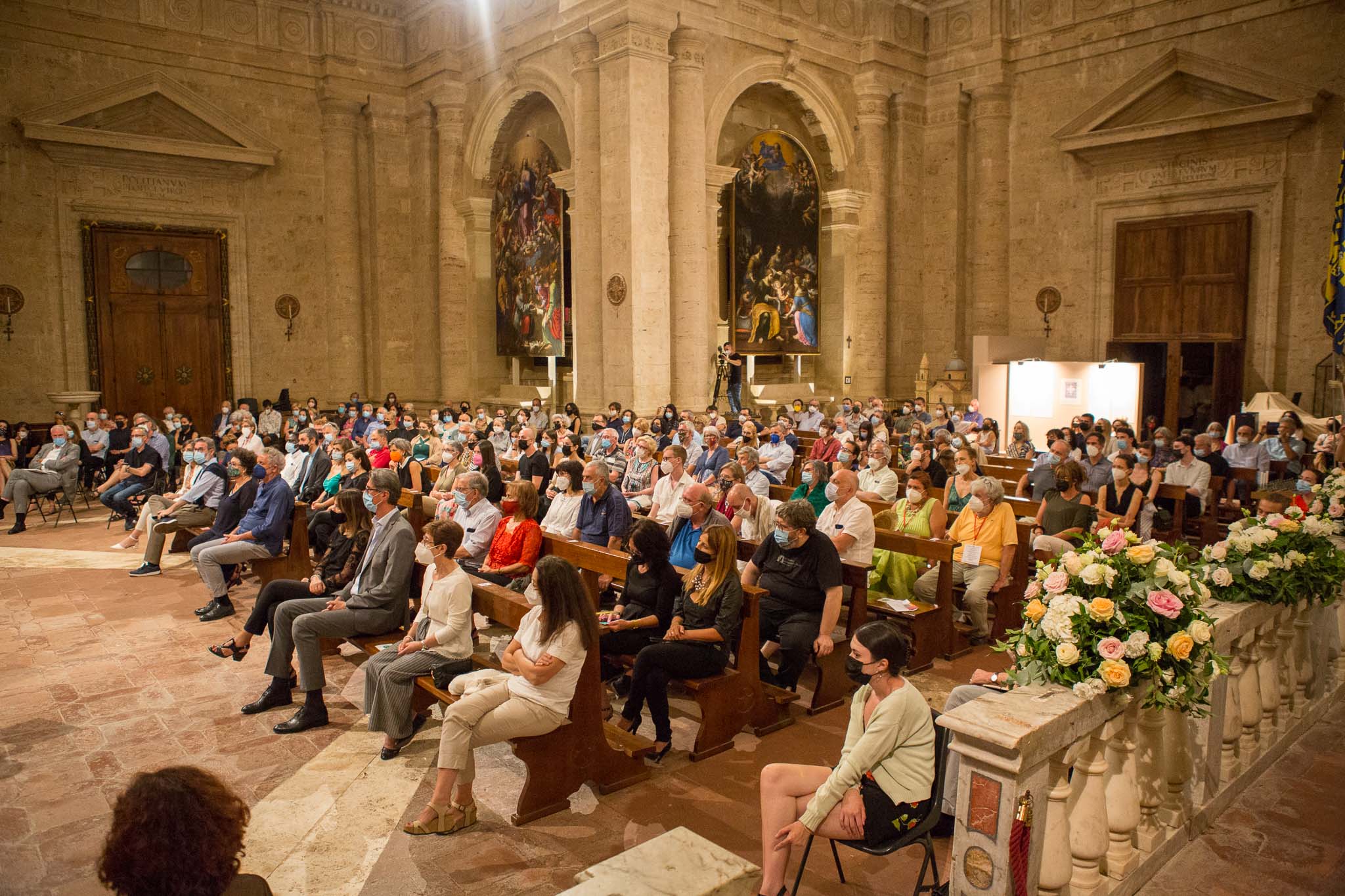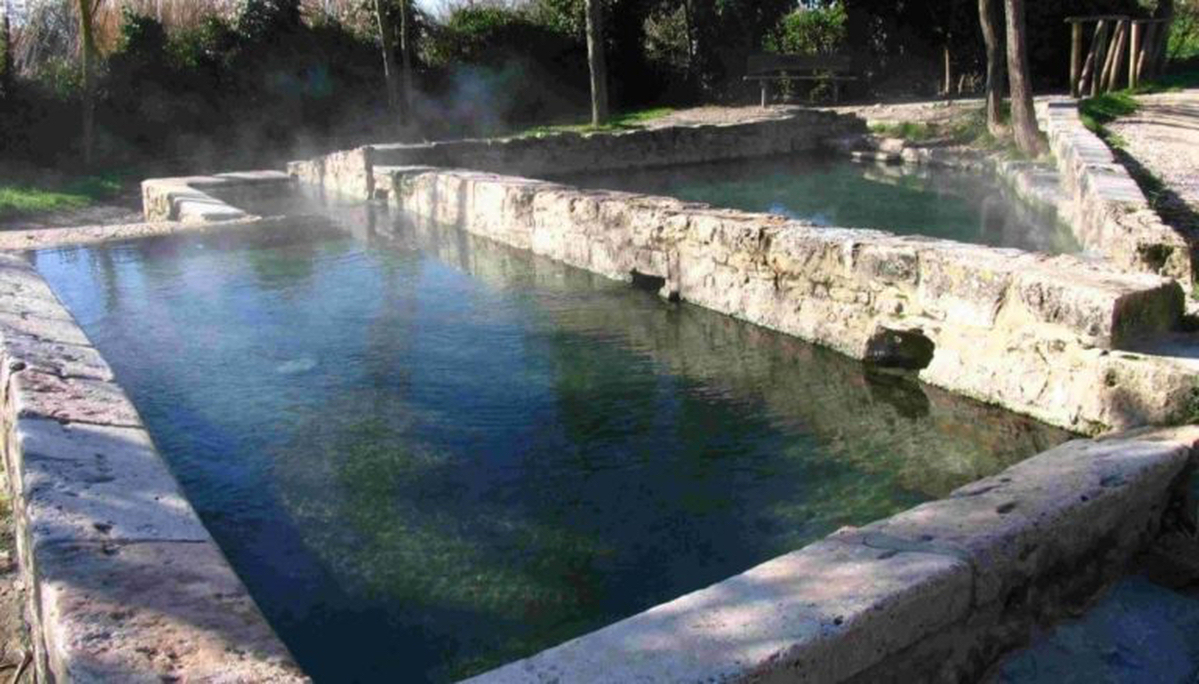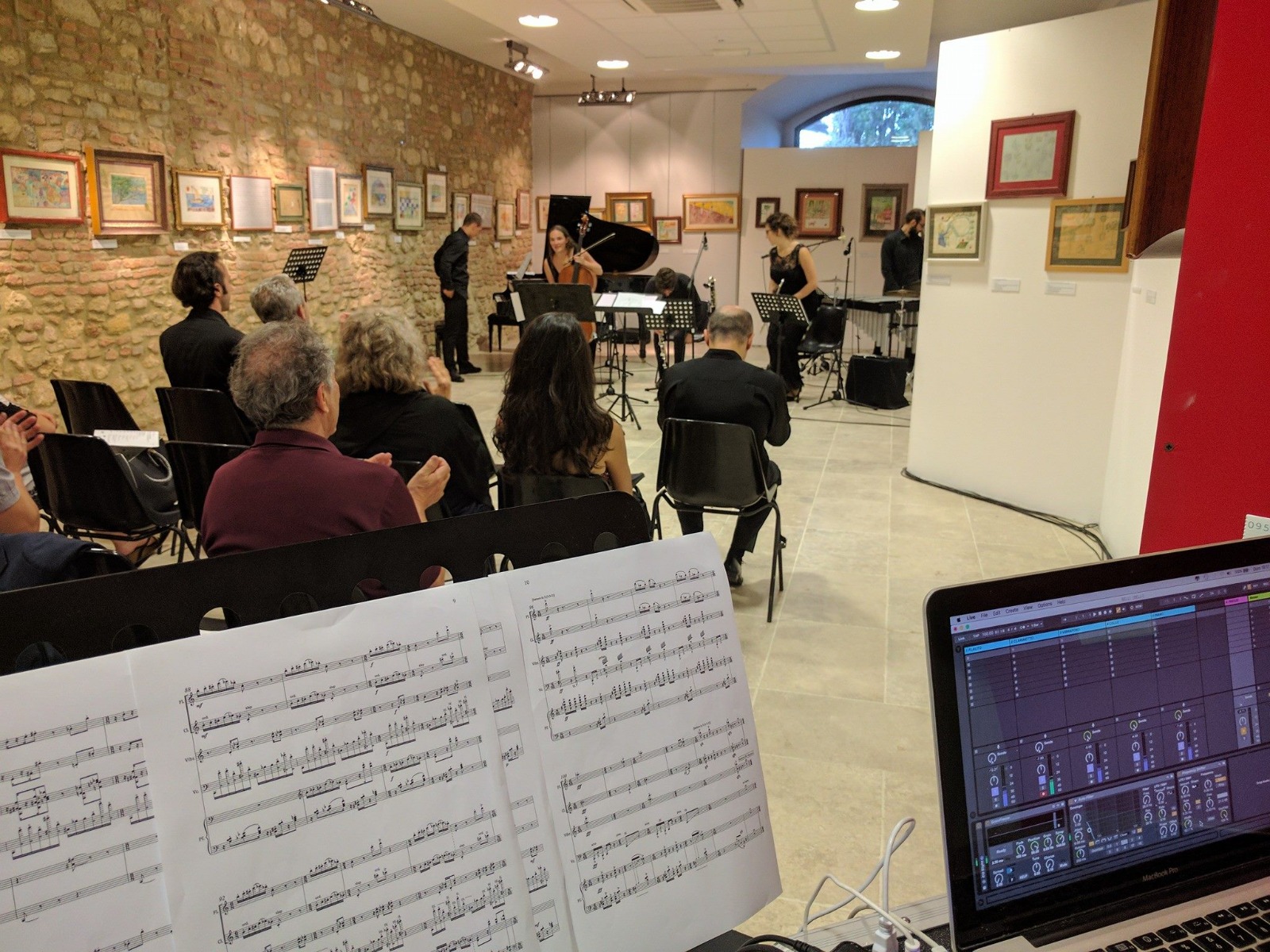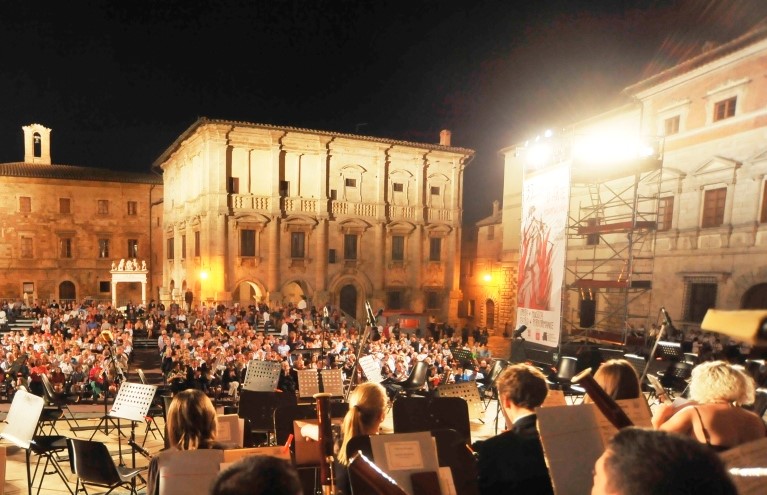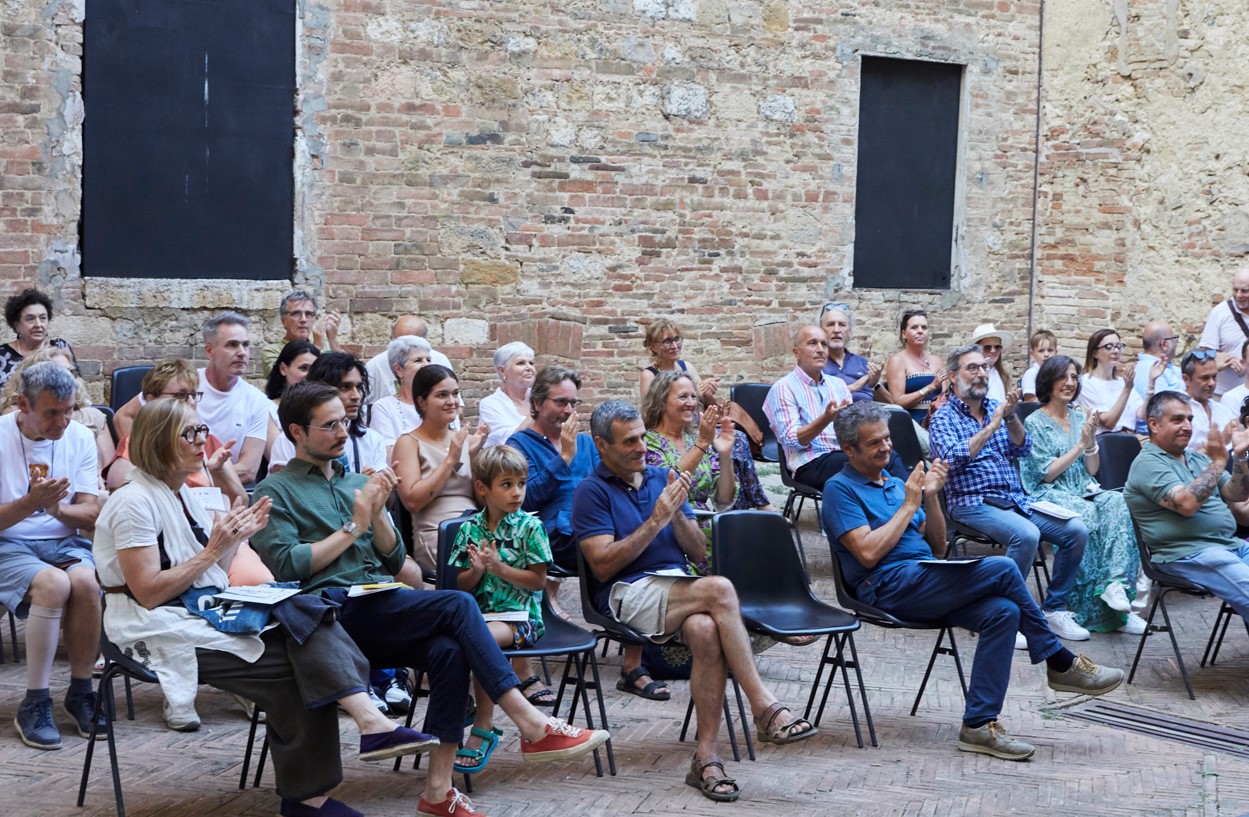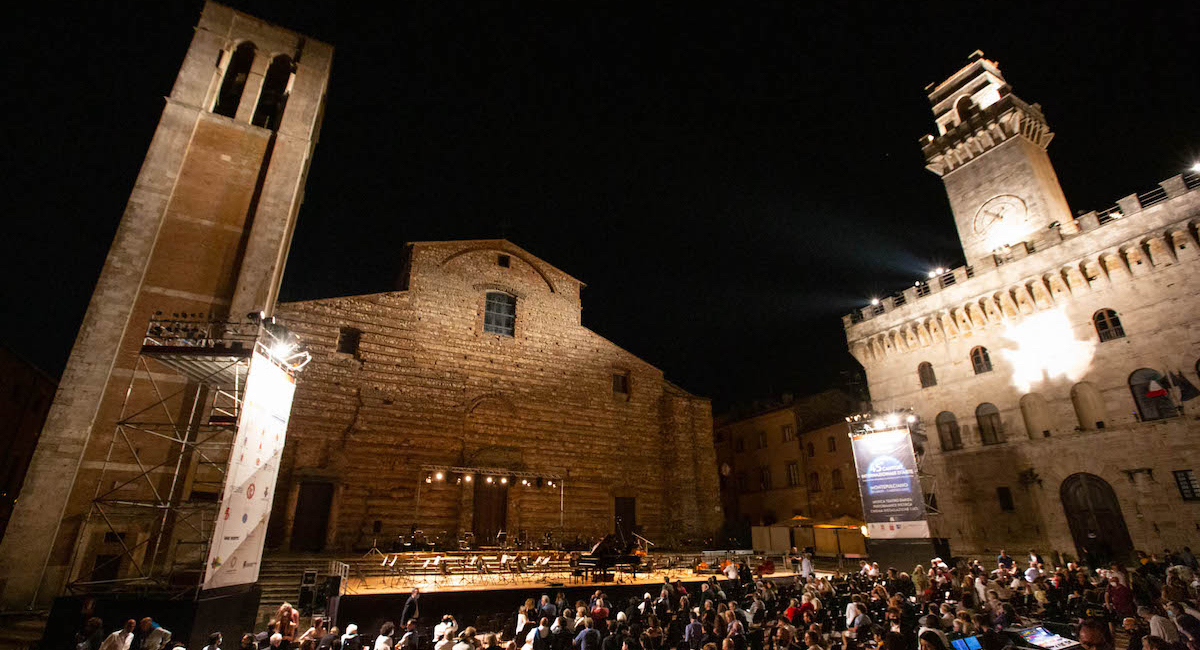SERIE MOZART Amadeus e le virtuose III
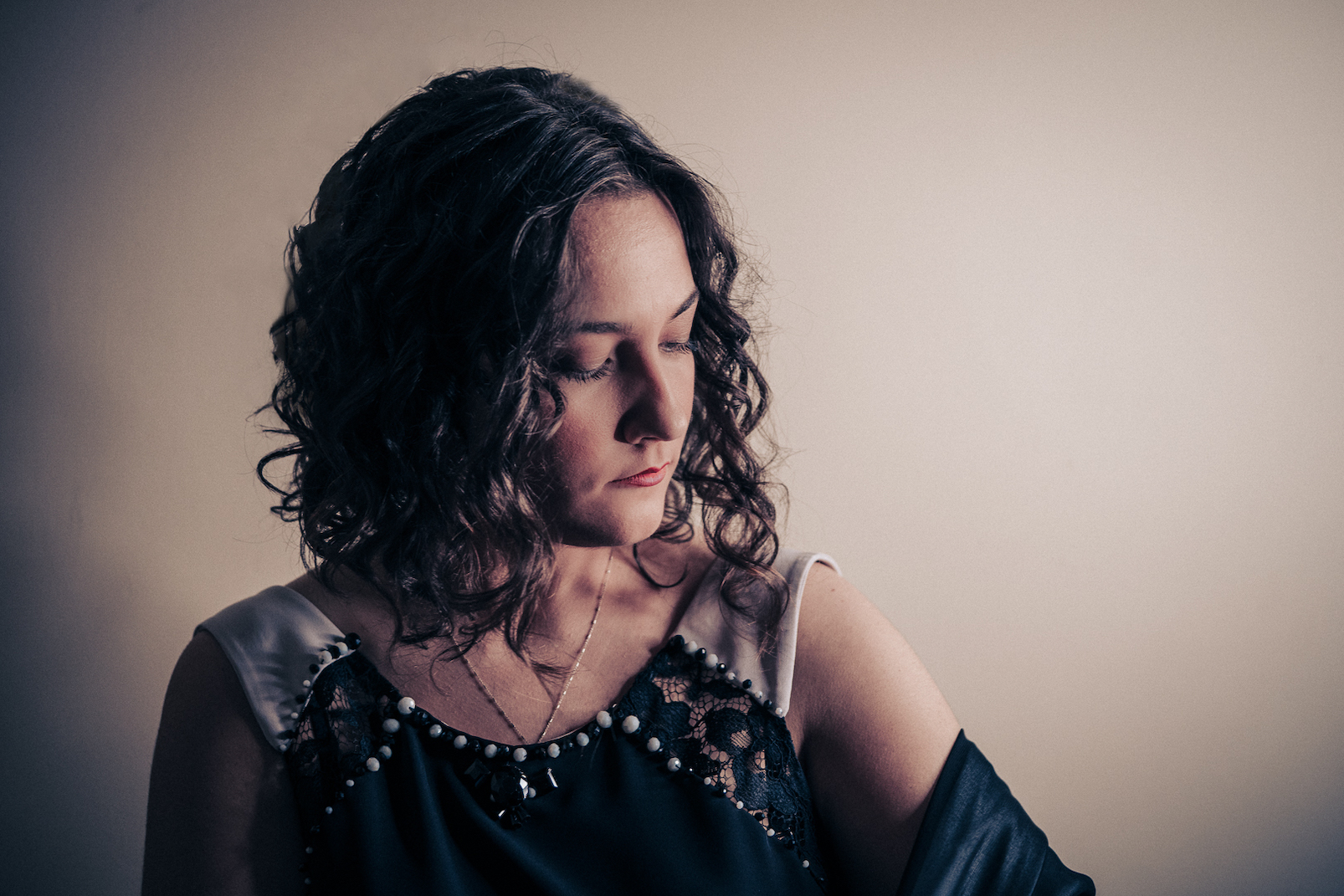
Serena Valluzzi
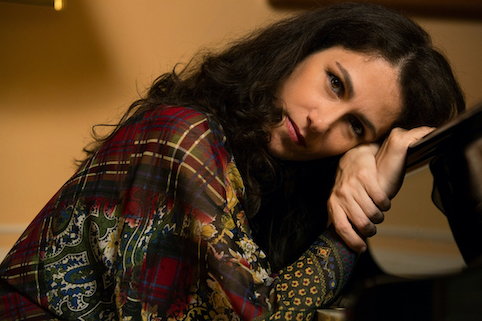
Alessandra Ammara
Orchestra Giovanile Italiana
Michele Gamba
direttore
Serena Valluzzi
Alessandra Ammara
pianoforte
MONTEPULCIANO - Teatro Poliziano
SABATO 20 LUGLIO
Ore 21.30
INGRESSO € 16
ACQUISTA IL BIGLIETTO
Per tutti i biglietti acquistati in prevendita,
la maggiorazione prevista è di 1,50 euro.
Wolfgang Amadeus Mozart
(1756 - 1791)
Concerto per pianoforte n. 9 in mi bemolle maggiore "Jeunehomme Konzert", K 271
Allegro
Andantino
Rondò. Presto
cadenza di Cristiano Paolini (prima assoluta, commissione 49º Cantiere)
Wolfgang Amadeus Mozart
Concerto per pianoforte n. 24 in do minore, K 491
Allegro
Larghetto
Allegretto
cadenza di Carmelo Bongiovanni (prima assoluta, commissione 49º Cantiere)
Luca Asioli
luci
Davide Calvarese
maestro alle luci
In collaborazione con
Scuola di Musica di Fiesole

Guido Levi Lighting Lab

Accademia Nazionale di Santa Cecilia
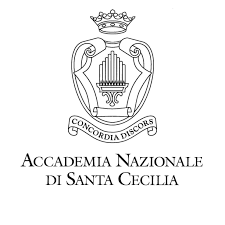
Concerto per pianoforte n. 9 in mi bemolle maggiore ”Jeunehomme konzert” K 271
Il concerto per pianoforte n. 9 in mi bemolle maggiore K 271 venne composto tra la fine del 1776 e il gennaio 1777, quando Mozart ha appena ventun’anni.
É stato scritto per una giovane pianista francese di passaggio da Salisburgo, tale Mademoiselle Jeunehomme, di cui conosciamo però solo il cognome e non sappiamo nemmeno se mai eseguì l’opera che oggi porta il suo nome.
Il concerto nei suoi tre movimenti si basa su un rapporto tra solista e orchestra in perfetto equilibrio, come accade in molte opere di Mozart appartenenti a questo genere.
Per la prima volta nella produzione concertistica mozartiana il secondo movimento, l’Andantino, si presenta in modo minore, in contrasto con il modo maggiore degli altri due, con un’ampia sezione cantabile e una cadenza realizzata dallo stesso Mozart.
Nel Rondò conclusivo, nel terzo movimento, ad un tema brillante, che in qualche modo anticipa il tema dell’aria di Monosratos ne Il Flauto Magico, viene contrapposto un improvviso Minuetto dal carattere calmo e disteso.
Al pianoforte Serena Valluzzi sarà accompagnata dall’Orchestra Giovanile Italiana, diretta da Michele Gamba. La cadenza del concerto è stata realizzata per il 49° Cantiere da Cristiano Paolini. (Myriam Bizzarri)
Piano Concerto No. 9 in E flat major K 271 "Jeunehomme konzert”
The Piano Concerto No. 9 in E flat major K 271 was composed between the end of 1776 and January 1777, when Mozart was just twenty-one years old.
It was written for a young French pianist passing through Salzburg, the story Mademoiselle Jeunehomme, but we only know his surname and we don't even know if he ever followed the work that today bears his name.
The concert in its three movements is based on a relationship between soloist and orchestra in perfect balance, as happens in many of Mozart's works belonging to this genre.
For the first time in Mozart's concert production, the second movement, the Andantino, is presented in a minor mode, in contrast with the major mode of the other two, with a large cantabile section and a cadenza created by Mozart himself.
In the final Rondo, in the third movement, a brilliant theme, which in some way anticipates the theme of Monosratos' aria in The Magic Flute, is contrasted with a sudden Minuet with a calm and relaxed character.
Serena Valluzzi will be accompanied on the piano by the Italian Youth Orchestra, directed by Michele Gamba. The cadence of the concert was created for the 49th Cantiere by Cristiano Paolini. (Myriam Bizzarri)
Secondo dei soli due concerti in modo minore scritti da Mozart, la scelta della tonalità di do minore in qualche modo segna una separazione con il passato «stile galante», di cui Mozart è intriso, e allo stesso tempo uno sguardo verso un futuro caratterizzato da un maggior impegno espressivo. Il carattere generale della composizione è cupo e introspettivo, in netto contrasto con la leggerezza tipica di altri concerti, e il tono minore viene spezzato solo dal secondo movimento, il Larghetto, in mi bemolle maggiore. Il terzo movimento, l’Allegretto, segue la forma del Tema e Variazioni, impiegato da Mozart solo in un altro concerto per pianoforte, il K 453 in sol maggiore.
Il ruolo di solista è affidato ad Alessandra Ammara, accompagnata dall’Orchestra Giovanile Italiana. La cadenza è stata composta per il 49° Cantiere da Carmelo Bongiovanni. (Myriam Bizzarri)
The last of three concertos composed between 1785 and 1786, the piano concerto no. 24 in C minor K 491 was completed on 24 March 1786 and performed in public for the first time on 3 April of the same year. Considered the pinnacle of Mozart's concert production, a symphony orchestra with a larger staff is employed here for the first time.
Second of only two in a minor key written by Mozart, the choice of the key of C minor somehow marks a separation with the past "gallant style", with which Mozart is imbued, and at the same time a look towards a future characterized by a greater expressive commitment. The general character of the composition is dark and introspective, in stark contrast to the lightness typical of other concerts, and the minor key is broken only by the second movement, the Larghetto, in E flat major. The third movement, the Allegretto, follows the form of the Theme and Variations, employed by Mozart in only one other piano concerto, K 453 in G major.
The role of soloist is entrusted to Alessandra Ammara, accompanied by the Italian Youth Orchestra. The cadenza was composed for the 49th Cantiere by Carmelo Bongiovanni. (Myriam Bizzarri)
Cadenze per I e III Movimento del Concerto n. 24 in do minore, K 491
Le due cadenze del I e III movimento sono concepite in modo tale da avere dei punti di contatto e risultare, in tal modo, un unicum costruttivo. La prima cadenza presenta temi presi dal I movimento che, come in lontananza, si sentono tra le trame di un discorso musicale estraneo a Mozart: si crea, così, una “parentesi” musicale dentro il concerto, un micro-ambiente che vuole far risultare i temi distorti come quando si sente qualcosa mentre si è sott’acqua.
Nella cadenza del III movimento, rispetto alla precedente, c’è un processo continuo che porta a far riemergere la musica mozartiana dall’ “humus” musicale estraneo, presentato all’inizio da un cluster, fino a palesarsi in modo chiaro con l’enunciazione del I tema del III movimento. La transizione dall’estraneo a Mozart è favorita anche da un ambiente armonico affine: il cluster iniziale, da cui partono anche le sestine alla battuta immediatamente successiva, è formato dalle note che compongono la melodia e l’armonia del I tema del movimento, così da favorire una certa unità con la musica mozartiana. (Carmelo Bongiovanni)![]()
Cadenzas for the 1st and 3rd Movements of the Concerto in C minor n. 24 KV 491
The two cadenzas of the I and III movements are conceived in such a way as to have points of contact and thus result in a constructive oneness. The first cadence presents themes taken from the first movement which, as if in the distance, can be heard among the textures of a musical discourse foreign to Mozart: thus, a musical "parenthesis" is created within the concerto, a micro-environment which aims to make the themes distorted as if you are hearing something while underwater.
In the cadenza of the third movement, compared to the previous one, there is a continuous process that leads to the re-emergence of Mozart's music from the extraneous musical "humus", presented at the beginning by a cluster, until it is clearly revealed with the enunciation of the first theme of the third movement. The transition from the interloper to Mozart is also favored by a similar harmonic environment: the initial cluster, from which the sextuplets also start in the immediately following bar, is formed by the notes that make up the melody and harmony of the first theme of the movement, so as to favour a certain unity with Mozart's music. (Carmelo Bongiovanni)
 Sostieni i progetti
Sostieni i progetti Amministrazione Trasparente
Amministrazione Trasparente Contatti
Contatti
